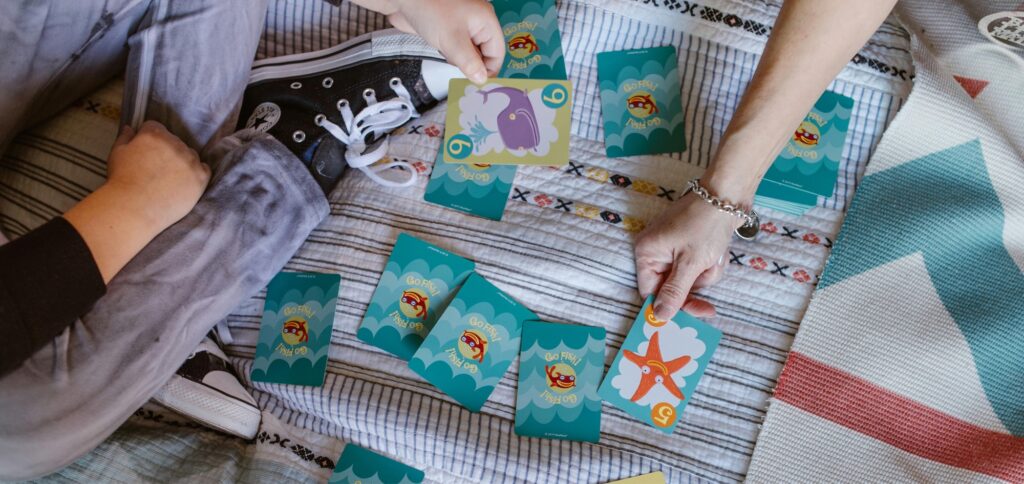
What is 164 times 5? Oh, and while you are at it, what were the 3 things you needed to get at the grocery store?
These questions and many more tug on our working memory. Working memory is our most temporary memory. It is where we hold things that we are presently using. Interestingly researchers believe that the person average can hold about 7 items in their working memory.
Moreover, even though researchers have found that working memory can be improved with practice, especially among people with ADHD, they don’t believe that people can actually expand their working memory capacity. Instead, they believe that people become better at discarding irrelevant information which frees up capacity to be used for the task at hand.
Not all dyslexic kids struggle with working memory and lots of people who aren’t dyslexic do struggle with working memory but we know that some of the skills dyslexic kids struggle with such as reversals and comprehension would be helped by improving working memory.
For example, if you have a child that struggles with letter reversals, you have probably watched them look at a “b” carefully and then immediately write a “d” or “p” instead of the “b” they intended because their working memory didn’t hold onto the direction of the letter.
We also see the need for working memory in decoding. If a child starts sounding out the word, smart, and decodes /s/ /m/ perfectly but then has forgotten that part by the time they have worked out the /r/ /t/ at the end, their working memory has failed them.
I could go on with examples, but instead, let’s get to the point. How can we help our kids use their working memory more efficiently?
Today I thought I would share 10 sneaky ways to practice working memory while having fun!
- Go Fish!: It’s an oldy but it’s a goody. We love playing Go Fish and an important component of the game is remembering what cards your opponent is holding.
- Memory: Also sometimes called Matching, Memory is another great game for memory practice. I often make cards at home with high-frequency words on them for extra reading practice. There are also many online versions of this game.
- Simon: This is a round electronic game that was popular when I was a kid in the 80’s and is still sold today. The device has 4 different colored buttons that light up in a specific sequence, which the player has to copy in order to advance to the next level.
- Memory Boxes: A memory box is especially fun for younger kids. Create two boxes with identical items in them with the exception of one or two items that are missing from the second box. Show your kiddo one box at a time and ask them to solve the mystery of what is missing from the second box.
- Grocery List Help: Who doesn’t need help with a quick grocery stop? Let your kiddo know that you have a lot on your mind and ask them to help you remember the grocery list. This will work best with 5 or less items. If you don’t think they can do this alone, then it is a great opportunity to teach them some memory strategies such as repeating the list over and over again, creating a mnemonic, or coming up with a story to aid memory of the list.
- Simon Says: Simon Says play Simon Says!
- Magic Cup Game: Place an item under one cup and then move the cups around a whole bunch. This quick fun game doesn’t only require working memory but also concentration and it is especially fun if there is something yummy under that cup.
- Telephone Game: Do you have a group? Try the classic telephone game where everyone lines up and the first person in line comes up with a sentence or two and whispers it in the ear of the next person. The message gets passed down and whispered from one ear to the next. While it can be fun to come up with complicated messages, for working memory purposes, the goal is to keep it simple enough that the kids have a good chance of remembering it if they work at it!
- Mental Math: I know this is a stretch when it comes to being fun but it can be. I find the car is a good place to come up with fun word problems. For example, if the car in front of us had 72 dirty gummy worms on the floor and the car behind us has 16 gummy bears stuck to the back seat how many yucky gummies are there in all?
- Name That _______!: My 5 year old invented this game. We play it while we are hiking but it would also be great for a quick errand in the car as long as you are coming home the same way you left. In the first few minutes of a hike, we all find and name a rock. The silly the name, the better. Perhaps Bobby Rough or Sandy Stone. Anyway, our goal is to find the same rock on the way back to the car and also remember the rocks name!
And there you have…ten mostly fun ideas for improving working memory. Do you have others? I would love to hear them in the comments!